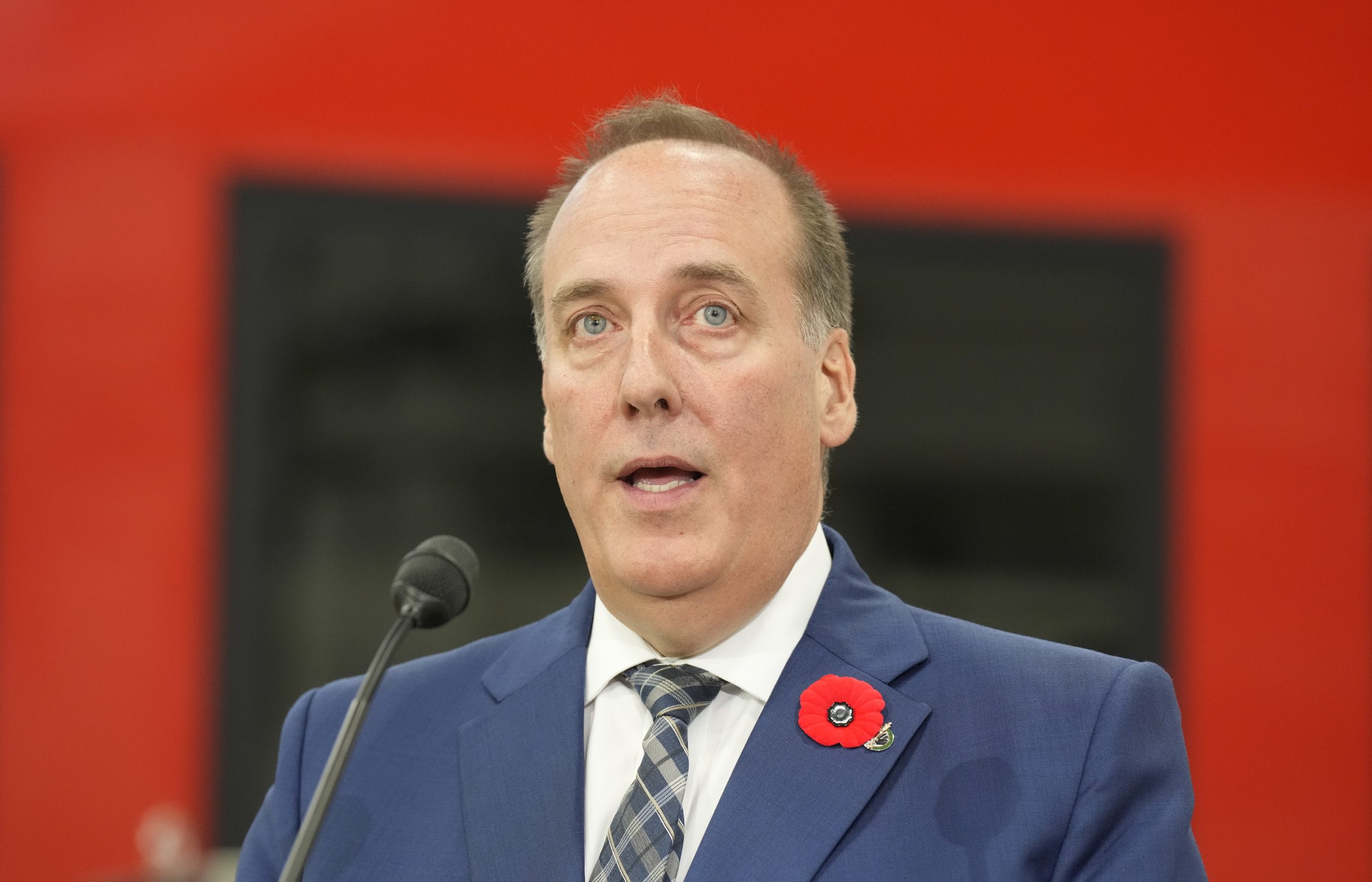Copyright ipolitics

Chris d’Entremont’s announcement that he’s leaving the Conservatives to join the Liberals landed with all the drama of a train stalling at Tunney’s Pasture. The optics didn’t help holding a press conference the very next day, staged in front of Ottawa’s OC Transpo trains, which have a reputation for breaking down at the worst possible moments. For a floor-crossing MP, the metaphor itself is almost poetic, a politician switching tracks right in front of the Capital city’s most notorious symbol of breakdowns and delays. Floor crossing is one of Parliament Hill’s strangest rituals. It’s high-risk theatre that rarely ends well. The new party pretends it’s thrilled to have you; the old one pretends it’s better off without you. Voters, donors and the volunteers who spent hours door-knocking, meanwhile, mostly feel duped. D’Entremont’s case is a bit of a puzzle. A veteran Nova Scotia MP and former deputy speaker, he wasn’t a rebel or a bomb-thrower. His brand was competence and quiet conservatism, not drama. Which is why his sudden conversion to Liberal red raised eyebrows even among Liberals. Every floor crosser insists on the same refrain “I didn’t leave my party; my party left me.” Sometimes that’s true, but more often than not, the average person will see it as opportunistic rather than noble. There are exceptions, of course. The archetype for a successful floor crossing in Canadian politics remains Scott Brison, who in 2003 left the newly merged Canadian Alliance–Progressive Conservative coalition to join Paul Martin’s Liberals. Brison moved early, framed it as principle over ideology, and landed a cabinet seat. Two decades later, he’s remembered as the rare defector who enhanced his reputation. Then there’s Belinda Stronach, whose 2005 defection from Stephen Harper’s Conservatives to Paul Martin’s Liberals saved the government by a single vote. Stronach’s move was pure high drama: national headlines, whispers of personal rivalries, a cabinet appointment, and outrage from her former caucus. One election later she was gone, her career overshadowed by the spectacle of the crossing itself. Those two are the anomalies. The more common outcome for floor crossers is somewhere between obscurity and disaster. Most others crash and burn. Eve Adams, crossing to the Liberals in 2015, promising to fight for “a kinder politics”, with Justin Trudeau standing beside her at the announcement, beaming, lost her nomination battle and vanished. Leona Alleslev, moving the other way in 2018, was named deputy leader, but lost her seat two years later in a riding that had never quite bought the conversion story. That’s the real problem with the act: voters rarely follow. In Westminster-style systems like Canada’s, the party brand is often more important than the individual MP. When you switch teams mid-game, your supporters stay with the jersey, not the player. Unless an MP can sell the switch as an act of conscience rather than ambition, and sell it fast, they’re done. Floor crossing also makes both parties look bad. The receiving side seems opportunistic, celebrating principle while really scoring optics. The losing side looks divided and defensive. In the end everyone walks away a little diminished and looking a little cynical, because everyone is. His departure is unlikely to matter beyond a few news cycles, but it reinforces a narrative of parliamentary instability given how razor thin the seat count is in the House. There’s also the ethical question, one that parliamentarians are loath to confront. Should MPs who switch parties be required to recontest their seats in a by-election? In theory, it’s the honest way to test whether voters approve of the move. In practice, no one wants to risk it. And so the phenomenon persists in its odd limbo, legally allowed, politically dangerous, and psychologically fascinating. But psychology is what keeps it fascinating. Every floor crosser imagines themselves the hero in a story about integrity. But politics is tribal. Crossing the floor doesn’t free you from partisanship, it just trades one tribe for another, and when they switch sides, the public rarely sees a principled stand, they see careerism, calculation, or opportunism. It’s the one act that almost guarantees cynicism all around. Brison and Stronach crossed when their timing aligned with opportunity. Adams and Alleslev crossed when it didn’t. D’Entremont? Too soon to tell. Maybe he’ll find new purpose in the red tent. Or maybe, like those trains behind him, he’ll discover the route looked smoother on paper than it is in motion. If symbolism counts, that backdrop was telling. Ottawa’s LRT eternally delayed, prone to breakdowns, plagued by design flaws, might be the most fitting stage for Canada’s newest Liberal. The system keeps promising a smoother ride, and somehow keeps delivering the opposite. Those OC Transpo trains behind him, eternally off schedule and prone to breakdowns, might have been the most honest metaphor in Canadian politics last week. Ariella Kimmel is the president of Winston Wilmont. Ariella has worked for a number of conservative governments, including in the Stephen Harper government, as a chief of staff in Alberta and most recently for Monte McNaughton while he served as minister of labour and immigration. The views, opinions and positions expressed by all iPolitics columnists and contributors are the author’s alone. They do not inherently or expressly reflect the views, opinions and/or positions of iPolitics.



